- Details
- Itinerary
- Ship
- Photos
Venture along Europe’s picturesque waterways and bike paths on an unforgettable bike and barge trip from Amsterdam to Bruges. Discover the magic of varied landscapes as you pedal through historic towns, vibrant tulip fields and charming villages. At each stop, your comfortable barge will welcome you for moments of relaxation and conviviality. Explore cultural treasures such as famous windmills, winding canals and fascinating medieval architecture. A unique experience combining cycling, navigation and discovery!
- Amsterdam
- Bruges
- Gand
- Middleburg
- Kierikzee
- Dordrecht
- Vianen
1 to 2 / 5
What do the difficulty levels mean?
1 : Easy route – flat terrain, minimal effort, between 20 and 50 km
2 : Fairly easy route – flat terrain with gentle hills, some degree of effort, between 50 and 70 km
3 : Intermediate route – several hills, between 70 and 100 km
4 : Advanced intermediate route – mountainous terrain, high effort, between 80 and 120 km
5 : Advanced route – major elevation changes, sustained effort, between 90 and 130 km
These are general guidelines; levels may vary depending on the specific routes.
Includes:
- Trip flight from Montreal to Amsterdam
- 2 nights’ accommodation in Amsterdam
- 2 breakfasts at the hotel
- 7 nights’ accommodation on a superior category boat (Sailing Home) staterooms in double occupancy and comfort plus (daily room service and air conditioning)
- 7 breakfasts on the ship
- 6 self-made lunch boxes on the ship
- 7 3-service dinners on the ship
- Coffee and tea
- 2 towels and linen for the week
- Visit to the medieval cities of Ghent and Bruges
- Services of a local guide during your stay
- Services of Daniel Gervais Gendronbike group leader
- All transfers
- Protection offered by the Compensation Fund for Customers of Travel Agents
- Taxes
Not included:
- Gratuities
- Meals other than those mentioned
- Bike rental with helmet, insurance included | Hybrid bike ($165) or electric bike ($320)
- Alcohol (must be paid on site)
- Baggage fees and seat selection with the airline
Introduction of Mandatory ETIAS Permit for Travels to Europe
Starting at the end of 2026, every Canadian traveler planning to visit Europe will be required to possess an ETIAS permit. This is the European Travel Information and Authorization System, implemented by the European Union.
For more information about this permit, you can visit the official website at the following address: https://travel-europe.europa.eu/etias_en.
Please note that this permit costs 7 euros per person, and the process can take up to 30 days for approval.
It is also mandatory to have a passport that remains valid for at least 3 months after your departure date from Europe. Without this, entry at the European border will be denied.
Itinerary:
Leaving in the evening.
Flight to Amsterdam.
Arrival at Amsterdam airport.
Transfer to your hotel.
Free time in Amsterdam.
Amsterdam was originally a simple village on the banks of the Amstel River with a direct link to the sea: this was Amsterdam in the 12th century. Between 1300 and 1306, Amsterdam was granted communal franchises. Since then, the city has grown steadily.
Dinner ($).
Breakfast at the hotel. Transfer to the barge.
Boarding.
After boarding the boat, you can stow your luggage in your cabin and enjoy a cup of coffee or tea. This is also a great opportunity to get to know your guide, the captain, the crew and, of course, the other passengers.
Dinner and overnight on board the barge.
Breakfast on the barge and preparation of your lunch box.
From Oude Wetering we continue our journey into the Green Heart along country lanes, canal and river banks and polders towards the cheese town of Gouda.
The name Gouda brings to mind not only cheese, pipes, syrup wafers and earthenware, but also painted stained glass windows, a fairy-tale town hall and the incomparable atmosphere of the canals. Gouda is a pleasant old Dutch town with a city center that has remained virtually untouched by the passage of time.
The beautiful gothic town hall, the Waag (public weight) and the large St. John’s church are well worth a visit! The latter is 123 meters long and renowned for its magnificent “Goudse Glazen” stained-glass windows. Gouda’s museums are as follows: Museumgouda (the Catharina Gasthuis Museum and the Moriaan Museum, the national pharmacy museum) the Goudse Kaas- en Ambachtenmuseum (Gouda Cheese and Crafts Museum) and het Verzetsmuseum Zuid-Holland (South Holland Resistance Museum). Other not-to-be-missed sights include the “Cultureel- en Havenkwartier” (culture and harbor district) with the “Weeshuisplein” (orphanage square), the “Catharina-tuin” (Catharina’s garden), several “hofjes” (small courtyards) and the Museumhaven Gouda.
As on most days, we’ll take a stroll around town after dinner.
Dinner and overnight on board the barge.
Breakfast on the barge and preparation of your lunch box.
We cycle along the Dutch IJsel and the Krimpenerwaard, the lowest polder in the Netherlands, on narrow cycle paths to the river Lek. Here we cross the Lek to Kinderdijk by ferry. The windmills of Kinderdijk are one of the best-known tourist attractions in the Netherlands. The site boasts the largest concentration of historic windmills in the country.
From the Lek dike, you have a splendid view of the 19 windmills, recently recognized as a UNESCO World Heritage Site. This is where we’ll take a break. We can also visit the inside of one of the mills.
Lunch box
After a beautiful excursion through the Alblasserwaard polder, we arrive at the shore of the Lower Merwede (Beneden-Merwede).
Take the ferry back to Dordrecht, the crossroads of several waterways and one of the oldest towns in the Netherlands. During the 11th century, Dordrecht was known as Thuredrith. In 1220, Dordrecht was granted municipal rights under William I of Holland. In the Middle Ages, Dordrecht was an important port city with a storage and sales license for maritime trade (circa 1350), which meant that products transported into the city also had to be offered for sale there. In the 15th century, the town suffered many disasters (siege, flood, fire). But the city survived and played an important role in Dutch politics. In 1572, a historic meeting, the first meeting of the Free States of Holland, took place in the Hof. This led to the creation of the autonomous state of the Netherlands. Dordrecht was also the site of resistance against the Spanish. In the 16th century, Dordrecht lost its dominant position as a trading city to Amsterdam and Rotterdam. In 1618-1619, a national synod was held in Dordrecht (of the Dutch Reformed Church). A theological dispute had arisen within the church. The most ‘strict’ religious doctrine ended up winning the synod. The result was the “Dordtse Leerregels”, aimed at the losers. The synod also decided to have the Bible translated into Dutch (“state translation”). Key buildings include the Grote Kerk church with its unfinished tower (14th century), a landmark of the city. Another striking building is the Groothoofdspoort, from which you have a magnificent view of the lively river.
Dinner and overnight on board the barge.
Breakfast on the barge and preparation of your lunch box.
Starting from Dordrecht, you will sail during breakfast towards the territory of the Great Rivers Delta. In the past, the numerous river arms were in free communication with the sea. Following the flooding caused by the North Sea in 1953, major works were carried out in connection with the Delta Plan. Numerous dams were built to retain water from the sea.
Most of Zeeland lies at or below sea level. In 1953, the dikes were low and in poor condition. In those days, the risk of flooding was once every 80 years. Thanks to Stormvloedkering, this risk is now less than once every 4,000 years.
In Willemstad, an old walled town, we’ll start a bike tour along the Volkerakdam (with the world’s most visited locks underneath) to the island of Goeree-Overflakkee. Today, the island is linked to the mainland by dams and bridges. These are part of the Delta Plan, implemented after the North Sea flood of 1953. The Delta Plan is a defense system that protects the south-western part of the Netherlands from sea flooding.
Shortly before the day’s final destination (Zierikzee, on the island of Schouwen-Duivenland) we visit the interesting Watersnoodmuseum. The museum is housed in one of the four caissons used to fill the last breach in the dikes. In November 1953, 10 months after the flood that breached over 300 dikes, the last breach was filled.
Dinner and overnight on board the barge.
Breakfast on the barge and preparation of your lunch box.
On this day we cycle towards the North Sea, along the Oosterschelde to the Oosterschelde dam. The dam features huge slides that can be lowered in the event of heavy storms or high tides, protecting the south-east of the Netherlands from the sea.
This dam was one of the last in a series of barriers against the sea. When you pedal over it, you’ll realize that this Delta Plan structure was the hardest and most expensive to protect the country from flooding, while at the same time allowing sea water into the vast Delta territory. The Oosterscheldekering is sometimes called the eighth wonder of the world.
After the dam, we continue on to Middelbourg, without missing a visit to the picturesque town of Veere. Middelbourg is the lively capital of the province of Zeeland: many old houses and churches, a Gothic town hall and a charming shopping center make Middelbourg a harmonious town. Middelbourg is also home to the Roosevelt Academy, of which the medieval town hall on the market square in the heart of Middelbourg is the main building.
If we get the chance, we’ll sail to Vlissingen during dinner. This pleasant port town lies between the Scheldt and the North Sea. We highly recommend a stroll around town and along the boulevard!
Lunch: box lunch.
Dinner and overnight on board the barge.
Breakfast on the barge and preparation of your lunch box.
The great crossing! Take the ferry from Breskens to Zeeland Flanders. Belgium is no longer far away.
Passing through a region full of small villages, creeks and winding dykes with sweeping views, we arrive at the Belgian-Dutch border at Sas van Gent, the former gateway to the port of Ghent.
After an hour and a half’s sailing, you’ll arrive in Ghent. From the quay, you can easily take the streetcar to the medieval center of this resplendent city.
The city of Ghent has a population of around 250,000. The name “Ghent” probably comes from the Gallic word Ganda, meaning confluence or mouth. The Lys and Scheldt rivers flow into the city. In 630, Saint-Bavon Abbey was founded by Saint Amand. In the Middle Ages, Ghent was one of Europe’s most important cities (in 1350, it had a population of around 56,000), thanks to the cloth industry. From the 14th to the 16th century, there were several revolts against the rulers and in the city itself. From 1584 (when the Spaniards regained control of Flanders during the Dutch revolt against King Philip II) to the 19th century, Ghent faced economic decline. Later, the city developed into an industrial and socialist city. The old town boasts many well-preserved guild and patrician houses, the Gravensteen (medieval castle), the Sint Niklaaskerk (St. Nicholas church, built in 1200), the 14th-century belfry and the Sint Baafskathedraal (St. Bavo’s cathedral, 14th century), home to the famous polyptych “The Adoration of the Mystic Lamb” by the Van Eyck brothers. In the city center, there are many pleasant squares and cafés.
Ghent is a lively city with a rich past. But it has much more to offer than museums. The city is a successful mix of pleasant little squares, traditional beers, trendy shopping streets lined with beautiful mansions, … and student life.
Lunch: box lunch.
Dinner and overnight on board the barge.
Breakfast on the barge and preparation of your lunch box.
In the morning, we cycle from Ghent city center to the picturesque Lys region and the tranquil East Flanders countryside. The region is characterized by forests and meadows, small villages and castles.
The last part of this stage will take you from Aalterburg (the short stage) to Bruges via the old towpath along the Ghent-Ostend canal, the oldest canal in Belgium.
The impressive city of Bruges marks the end of your bike & boat trip. In the afternoon and evening we’ll visit the old medieval center. You’ll definitely want to stay an extra day….Bruges was famous for its flourishing trade in high-quality drapery, which was exported all over Europe. Around 1350, the city had over 40,000 inhabitants – twice as many as in the historic center today. During this period, the second city walls were built. In the 15th century, Bruges was under the rule of the Dukes of Burgundy, who brought prosperity and luxury to the city: development of the arts and banking. The town hall, many old houses and parish churches, and the mausoleums of Mary of Burgundy and Charles the Bold in the Church of Our Lady date from this period. At the end of the 15th century, the Court of Burgundy left Bruges, marking the end of a period of continuous growth. The silting-up of the coast meant that the city was no longer easily accessible to ships. It was at this time that Antwerp became the dominant city. In 1584, the city came under Spanish rule. The Wars of Religion and difficult access led to its decline. In the 19th century, Bruges was a poor city with no industrialization. G. Rodenbach’s novel “Bruges la Morte” (1892) contributed greatly to Bruges’ reputation as a city of art and later as a tourist center. Bruges boasts many tourist attractions, including the Church of Our Lady, the Belfry and covered market, the Gruuthuse Museum and the Lace Center.
Lunch: box lunch.
Dinner and overnight on board the barge.
Breakfast on the barge.
Transfer to the hotel in Amsterdam.
Free time.
Breakfast at the hotel.
Transfer to the airport, flight and return to Montreal.
Navire
Boat: Sailing Home
The Sailing Home has a dining room, a spacious lounge, a comfortable bar and a sun deck. The Sailing Home began sailing in 2001. The interior of the lounge and bar is decorated in a modern Victorian style and offers a lot of comfort.
Capacity : 26 persons
Length/width : 45 x 6,5 m
Electricity: 220 V
Wifi on board: Yes, available in limited quantities in the lounge and on the deck
Can the windows open? No
Air conditioning: Yes
Cabins:
Thirteen cabins with private shower, sink, toilet, central heating and air conditioning.
Hairdryers are available on board.
| Date | Prix (occ. double) | Option | Accompanied by |
|---|---|---|---|
| June 3 to 13, 2025 | Full | Default option | Paul Dubrûle |
June 3 to 13, 2025
11 days | 9 nights | Flight | 22 meals
Conditions
First 10 seats at this price.
Group leader
 Questions about this travel?
Questions about this travel?
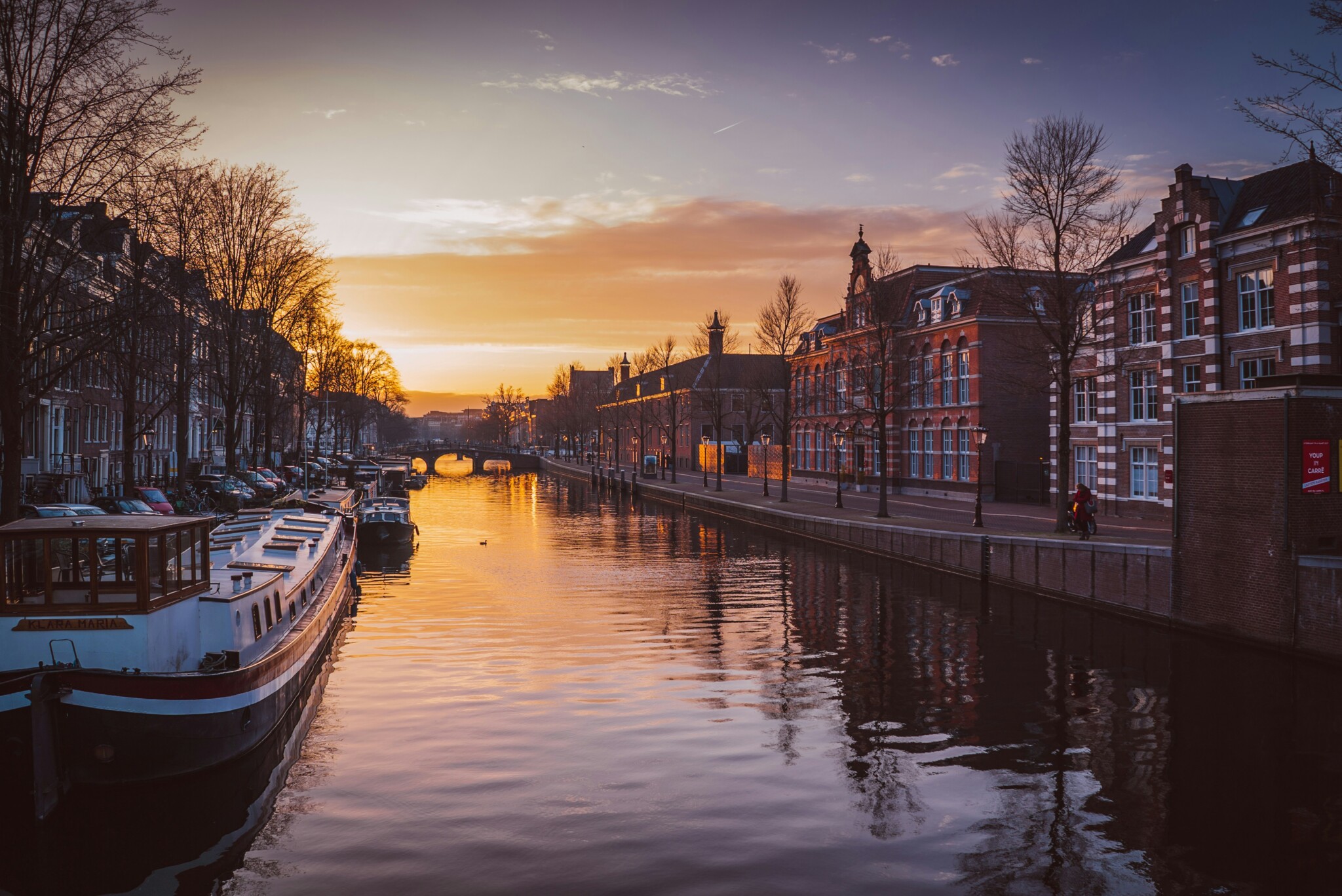
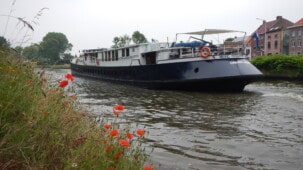
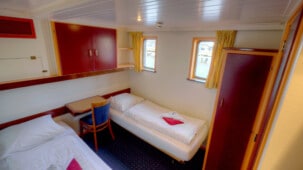
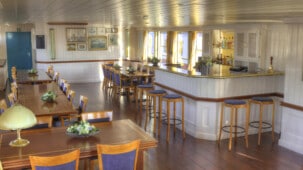
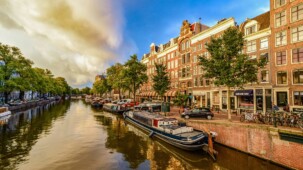
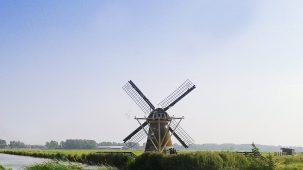
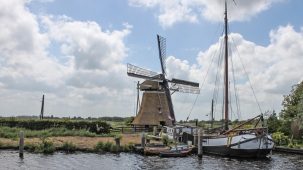
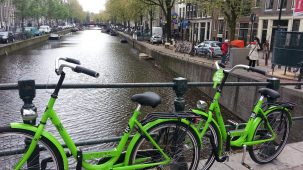
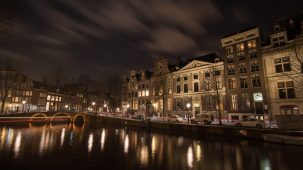
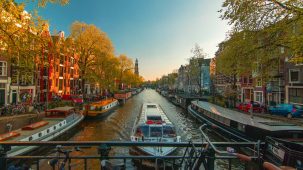
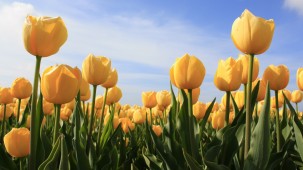
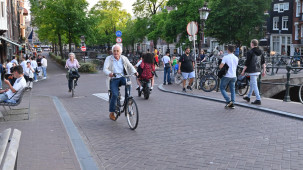
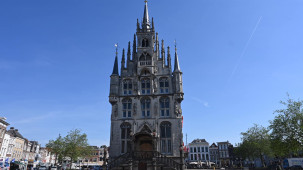
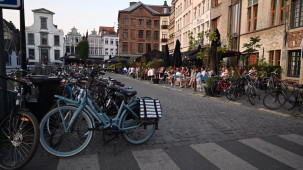
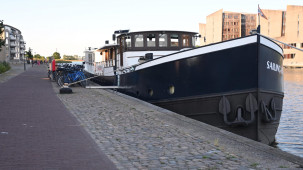
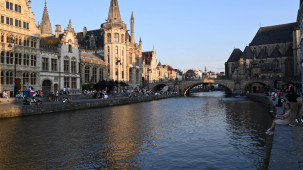
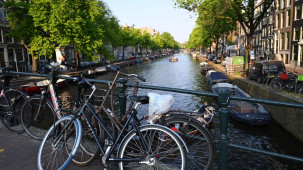
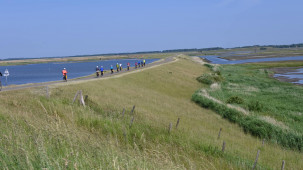
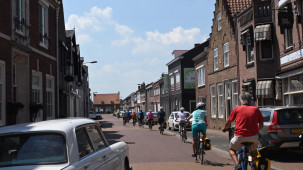
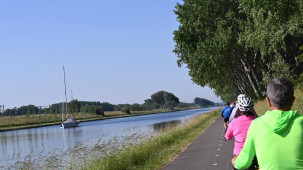
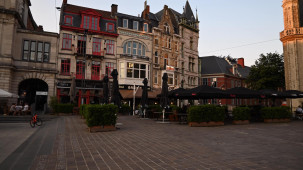

 You are single and want to save money?
You are single and want to save money?